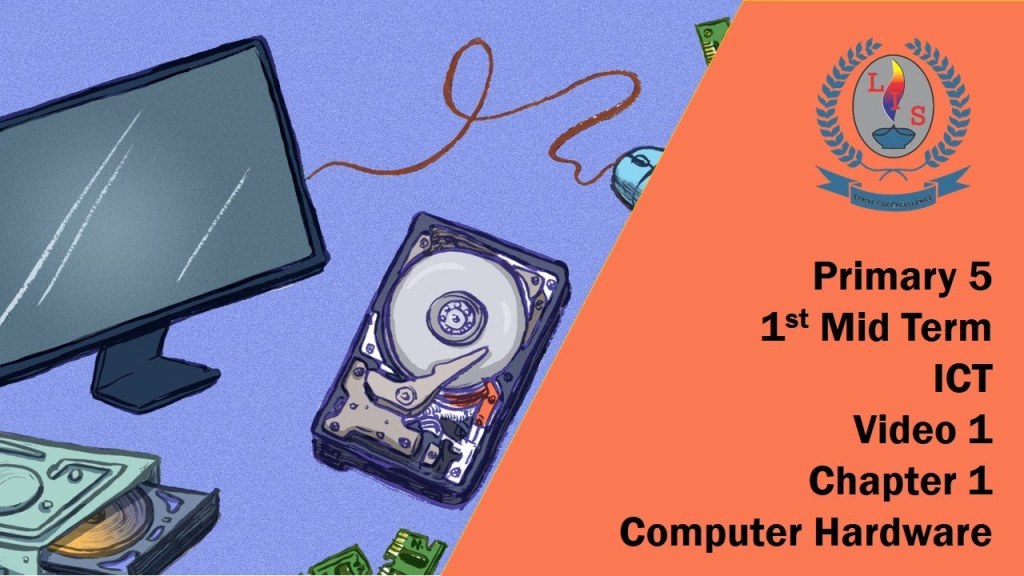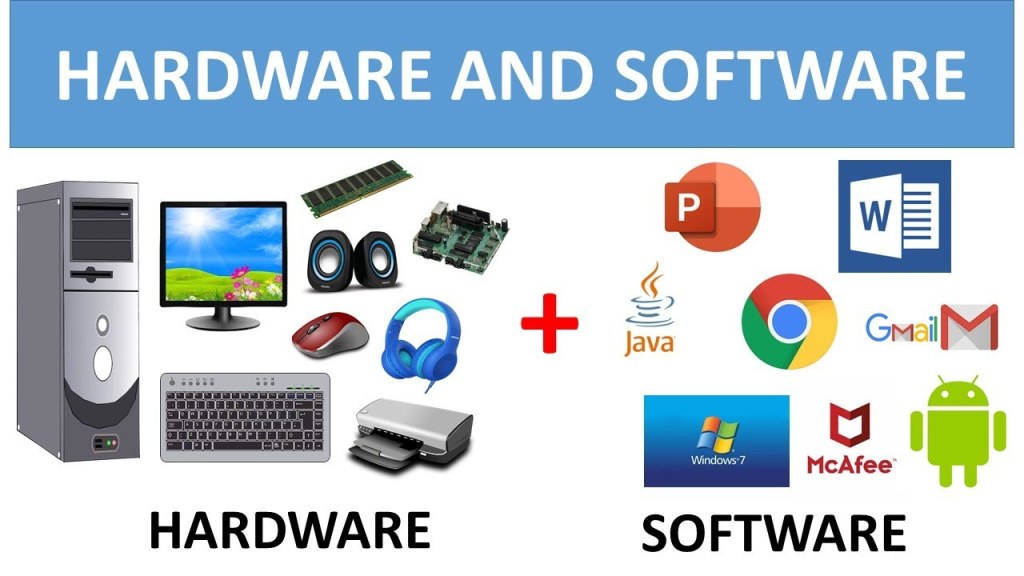Discover Essential Computer Hardware For Primary 5: Upgrade Your Learning Experience Today!
Computer Hardware for Primary 5
Greetings, Readers! In this article, we will explore the world of computer hardware for primary 5 students. Understanding computer hardware at a young age is crucial for students as it lays the foundation for their technological skills. By familiarizing themselves with the basic components of a computer, primary 5 students can develop a solid understanding of how these devices work. Let’s delve into the intricacies of computer hardware and its importance in primary education.
Introduction
3 Picture Gallery: Discover Essential Computer Hardware For Primary 5: Upgrade Your Learning Experience Today!



Computer hardware refers to the physical components of a computer system that can be seen and touched. These components work together to enable the computer to function and perform various tasks. It is essential for primary 5 students to have a basic understanding of computer hardware as it forms the backbone of technological knowledge.
Understanding computer hardware empowers primary 5 students with the ability to troubleshoot common issues, upgrade components, and maximize the potential of their devices. Let’s explore the various aspects of computer hardware that primary 5 students should be familiar with.
1. What is Computer Hardware?

Image Source: lifewire.com
Computer hardware encompasses all the physical components that make up a computer system. This includes the central processing unit (CPU), motherboard, memory, storage devices, input devices, output devices, and peripheral devices. Each component plays a crucial role in the overall functioning of the computer.
🖥️ The CPU acts as the brain of the computer, executing instructions and performing calculations. The motherboard serves as a central hub, connecting all the components together. Memory stores data temporarily, while storage devices, such as hard drives and solid-state drives, store data permanently. Input devices, like keyboards and mice, allow users to interact with the computer, while output devices, such as monitors and printers, display information to the user. Peripheral devices include external devices like scanners, webcams, and speakers.
2. Who Should Learn About Computer Hardware?

Image Source: ytimg.com
Computer hardware knowledge is beneficial to anyone interested in technology, including primary 5 students. Learning about computer hardware at a young age provides a strong foundation for future technological endeavors. It equips students with essential skills and knowledge that can be applied throughout their academic and professional lives.
🧒👩💻 Primary 5 students who understand computer hardware will be better prepared to navigate the digital world and utilize technology effectively. Whether they pursue careers in science, engineering, or any other field, computer hardware knowledge will prove invaluable.
3. When Should Students Start Learning About Computer Hardware?
The earlier, the better! Introducing computer hardware concepts to primary 5 students provides them with a head start in their technological journey. By starting at a young age, students can gradually build upon their knowledge and develop a deeper understanding of computer hardware as they progress through their academic years.

Image Source: ytimg.com
📚 Encouraging primary 5 students to explore computer hardware helps cultivate their curiosity and interest in technology. It is never too early to ignite a passion for learning and equip students with the tools they need to navigate the ever-evolving digital landscape.
4. Where Can Students Learn About Computer Hardware?
Computer hardware can be learned through a combination of classroom instruction, practical hands-on activities, and online resources. Schools can incorporate computer hardware lessons into their curriculum, providing students with the opportunity to engage with the subject in a structured environment.
🏫 Additionally, there are numerous online tutorials, videos, and interactive platforms that cater specifically to primary 5 students. These resources make learning about computer hardware engaging and accessible, allowing students to explore at their own pace.
5. Why is Computer Hardware Important for Primary 5 Students?
Computer hardware knowledge is essential for primary 5 students as it equips them with skills that will be valuable throughout their lives. Understanding computer hardware promotes problem-solving abilities, critical thinking, and logical reasoning. It encourages students to explore, experiment, and innovate.
🧠 Furthermore, computer hardware knowledge fosters digital literacy. In today’s technology-driven world, being familiar with computer hardware goes beyond mere convenience—it is a necessity. By developing a solid foundation in computer hardware, primary 5 students can confidently navigate the digital landscape and adapt to technological advancements.
6. How Can Students Learn about Computer Hardware?
Primary 5 students can learn about computer hardware through a combination of theoretical and practical approaches. Classroom lessons can be supplemented with hands-on activities, such as disassembling and reassembling computer components.
🔧 Engaging in problem-solving exercises and participating in group discussions can further enhance students’ understanding of computer hardware. Additionally, interactive online resources, virtual simulations, and educational games can make learning about computer hardware enjoyable and immersive.
Advantages and Disadvantages of Computer Hardware for Primary 5 Students
Advantages:
1. Enhanced Technological Literacy: By learning about computer hardware, primary 5 students develop a deeper understanding of technology, allowing them to navigate the digital world more confidently.
2. Improved Problem-Solving Skills: Familiarity with computer hardware encourages primary 5 students to think critically, analyze issues, and devise effective solutions.
3. Future-Proofing Abilities: By equipping primary 5 students with computer hardware knowledge, we prepare them for the rapid advancements in technology that they will inevitably face in the future.
4. Broadened Career Prospects: Computer hardware knowledge opens doors to various career opportunities in fields such as engineering, computer science, and technology.
5. Empowering Creativity: Understanding computer hardware enables primary 5 students to unleash their creative potential by utilizing technology to innovate and create.
Disadvantages:
1. Potential Distractions: Excessive focus on computer hardware may detract from other important subjects in the curriculum.
2. Cost: Introducing computer hardware education may require additional resources and funding.
3. Technical Difficulties: Teaching computer hardware to primary 5 students may present challenges, as they may not have the same level of technical proficiency as older students.
4. Limited Access: Not all schools may have the necessary resources or infrastructure to provide hands-on computer hardware education.
5. Rapid Technological Changes: Computer hardware evolves at a rapid pace, requiring constant updates and knowledge refreshment for educators.
FAQs (Frequently Asked Questions)
1. Is computer hardware for primary 5 difficult to learn?
No, computer hardware concepts can be taught in an engaging and accessible manner, making it suitable for primary 5 students.
2. How can computer hardware benefit primary 5 students in their everyday lives?
Computer hardware knowledge allows primary 5 students to troubleshoot common issues, understand the devices they use daily, and maximize their potential.
3. Are there any career opportunities related to computer hardware?
Absolutely! Careers in computer science, engineering, and technology often require a strong foundation in computer hardware.
4. Can primary 5 students build their own computers?
While it may be too advanced for primary 5 students to build a computer from scratch, they can certainly learn how the components work together.
5. Is computer hardware education necessary in today’s digital age?
Yes, computer hardware education is crucial in ensuring that primary 5 students are equipped with the necessary skills to navigate the digital landscape effectively.
Conclusion
In conclusion, computer hardware knowledge is a valuable asset for primary 5 students. By understanding the components that make up a computer system, students can develop problem-solving skills, boost their technological literacy, and explore their creative potential. With the right resources and guidance, primary 5 students can embark on a journey of discovery and growth in the world of computer hardware.
Final Remarks
Computer hardware education should be an integral part of primary 5 students’ learning journey. It lays the foundation for their future technological pursuits and equips them with essential skills that are increasingly relevant in today’s digital age. While it may require additional resources and effort, investing in computer hardware education for primary 5 students is an investment in their future success. Let’s empower the next generation with the knowledge they need to thrive in an ever-evolving technological landscape.
This post topic: Electronics


